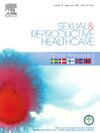对产妇动态分娩姿势的理解--混合概念分析
IF 1.4
3区 医学
Q3 PUBLIC, ENVIRONMENTAL & OCCUPATIONAL HEALTH
引用次数: 0
摘要
问题和背景:对不同分娩姿势优缺点的评估主要集中在医学或技术方面的考虑,很少有研究考虑到产妇在分娩过程中顺应身体本能的能力。本研究的目的是定义动态分娩体位的概念及其在分娩过程中的意义。方法这种混合概念分析包括三个阶段:理论、实地考察和分析。在理论阶段,使用相关术语搜索了 Science Direct、PubMed 和 Google Scholar。在实地调查阶段,对七位专业人士和六位有动态分娩姿势经验的母亲进行了访谈。每次访谈后都进行了定性内容分析。结果在理论阶段,动态分娩姿势的定义包括对 "谁"、"什么"、"何时"、"何地 "和 "为什么 "问题的描述。在实地调查阶段,结果显示了两个不同的类别来定义动态分娩姿势:"妇女的选择,妇女的权力 "和 "休息与活动之间的流动"。本研究的最终分析阶段表明,动态分娩姿势的特点是在整个分娩和生产过程中,根据产妇的个人喜好,通过各种姿势的有机进展,将休息和活动完美地融合在一起。结论动态分娩姿势的定义将分娩重新定义为一个不断发展的动态旅程,其特点是运动和休息时刻的流畅互动,超越了传统的固定静态姿势。本文章由计算机程序翻译,如有差异,请以英文原文为准。
The understanding of dynamic birth positions for women in labor and childbirth – A hybrid concept analysis
Problem and background: The assessment of advantages and drawbacks associated with varying birthing positions has predominantly centered around medical or technical considerations and few studies have accounted for a woman’s ability to attune to her bodily instincts during labor and birth. The objective of this study was to define the concept of dynamic birth positions and its significance within the birthing process.
Methods
This hybrid concept analysis consisted of three phases: theoretical, fieldwork, and analytical. Science Direct, PubMed and Google Scholar were searched with related terms in the theoretical phase. In the fieldwork phase, seven professionals and six mothers with the experience of dynamic birth positions were interviewed. After each interview, qualitative content analysis was conducted. During the final phase, descriptions and themes from the first two phases were combined.
Results
In the theoretical phase, the definition of dynamic birth positions included descriptions answering the Who, What, When, Where, and Why questions. In the fieldwork phase, the results present two distinct categories that define dynamic birth positions: “Women’s choice, women’s power” and “A flow between rest and activity.” The final analysis phase of this study indicated that dynamic birth positioning is characterized by the organic progression through a variety of postures that seamlessly merge rest and activity throughout the labor and birthing process, guided by the woman’s individual preferences.
Conclusions
The definition of dynamic birth positions redefines birth as an evolving, dynamic journey characterized by a fluid interplay of movements and moments of rest, transcending conventional fixation on static positions.
求助全文
通过发布文献求助,成功后即可免费获取论文全文。
去求助
来源期刊

Sexual & Reproductive Healthcare
PUBLIC, ENVIRONMENTAL & OCCUPATIONAL HEALTH-
CiteScore
2.70
自引率
5.60%
发文量
73
审稿时长
45 days
 求助内容:
求助内容: 应助结果提醒方式:
应助结果提醒方式:


